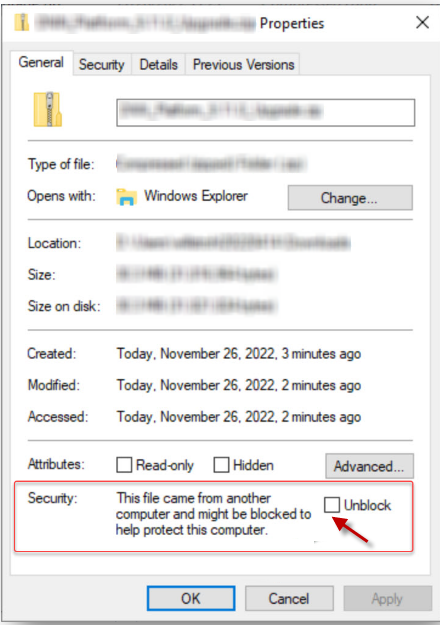Troubleshooting Office 365 Monitoring
Here, we have discussed some issues that you may face when monitoring Office 365 and how to resolve them.
Troubleshooting Failure of eG Agent to Report Metrics
If the eG agent is unable to report metrics on Office 365 performance, then you may want to check whether/not the Microsoft Azure Active Directory Module for Windows PowerShell and the Microsoft Online Services Sign-in Assistant for IT ;Professionals RTW are properly installed on the eG agent host. To perform this check, do the following:
- On the eG agent host, click Start, and search for Windows Powershell ISE. Once it is found, run Windows Powershell ISE ;in the elevated mode.
-
First, check if the PackageManagement module is installed properly. For that, type Install-Module, and see if the auto-complete feature of Windows automatically lists the command you were about to type (see Figure 1).

Figure 1 : Checking if the PackageManagement module has been installed properly
- If the command auto-completes, it means that the PackageManagement module has been installed properly. If the command does not auto-complete, then you can conclude that the PackageManagement module has not been installed on the eG ;agent host. In this case, first install this module on the eG agent host. You can download the installable from the URL: https://download.microsoft.com/download/C/4/1/C41378D4-7F41-4BBE-9D0D-0E4F98585C61/PackageManagement_x64.msi
-
If you find that the PackageManagement module has been installed properly, proceed to check if the Microsoft Azure Active Directory Module for Windows PowerShell and the Microsoft Online Services Sign-in Assistant for IT Professionals RTW are properly installed on the eG agent host. To perform this check, with the Windows Powershell ISE in the elevated mode, type the following commands one after another:
Connect-MSolService
Get-MsolDomain
Get-MsolGroup
-
If these commands auto-complete - i.e., if Windows lists these commands even before you type them fully - you can conclude that the Microsoft Azure Active Directory Module for Windows PowerShell and the Microsoft Online Services Sign-in Assistant for IT Professionals RTW are properly installed on the eG agent host. On the other hand, if the commands do not auto-complete, then you must proceed to install both the aforesaid modules on the eG agent host. To know how to install, refer to the Pre-requisites for Monitoring Microsoft Office 365 Environments.
Troubleshooting Failure of eG Tests that Use the Microsoft Graph API
If the tests that use the Microsoft Graph API fail to run and report metrics, then check the error log (in the <EG_AGENT_INSTALL_DIR>\agent\logs\ directory) for the following error:

Figure 2 : Error that will be logged in the eG agent's error log if eG tests that use the Microsoft Graph API fail to report metrics
If the error message highlighted in Figure 2 is logged in the error log, it is a clear indicator that the tests failed because the files required for running the tests are either unavailable on the eG agent host or are blocked.
To check if the files are available, open the C:\Program Files\WindowsPowerShell\Modules\AzureAD\2.0.2.182\ folder on the eG agent host. See if the following files are available in the said folder:
-
Microsoft.IdentityModel.Clients.ActiveDirectory.dll
-
Microsoft.IdentityModel.Clients.ActiveDirectory.Platform.dll
-
Microsoft.IdentityModel.Clients.ActiveDirectory.Platform
-
Microsoft.IdentityModel.Clients.ActiveDirectory
If you find the aforesaid files therein, then it can only mean that the tests failed because the files are blocked. In which case, proceed to unblock the files. To unblock, follow the steps below:
-
Open Windows Explorer and navigate to the C:\Program Files\WindowsPowerShell\Modules\AzureAD\2.0.2.182\ folder.
-
Right-click on any of the files in that folder, and select the Properties option from the shortcut menu that pops up.
-
Figure 3 will then appear.

-
To unblock the chosen file, select the Unblock check box in the Security section of Figure 3.
-
Finally, click the OK button in Figure 3 to save the changes.
-
Repeat steps 2-5 for each of the files in that folder.
Once this is done, the tests will start running and reporting metrics.
On the other hand, if the aforesaid files are not present in the C:\Program Files\WindowsPowerShell\Modules\AzureAD\2.0.2.182\ folder, then you should first make them available on the eG agent host and then unblock them. For that, follow the steps detailed in point 4 of
Troubleshooting 'Out of Memory' Exception
When monitoring large Office 365 environments, you may sometimes run into a 'System.OutOfMemoryException' in powershell. This can happen, if Windows powershell does not have enough memory to process large volumes of data. If you encounter this exception, then you will have to increase the powershell memory of the eG agent monitoring one/more Office 365 components. For this, follow the steps below:
- Login to the system hosting the eG agent.
- Launch Windows PowerShell in elevated mode.
-
Execute the following commands one after another:
sl WSMan:\localhost\Shell
Set-Item .\MaxMemoryPerShellMB 4096
cd..
cd plugin
Set-Item .\microsoft.powershell\Quotas\MaxConcurrentCommandsPerShell 4096
Restart-Service winrm
Troubleshooting Hexadecimal Values Being Reported Instead of User Names and Site URLs
The detailed diagnosis of a few Office 365 tests may sometimes report hexadecimal values (such as GUID, UUID etc.) in the place of user names and site URLs. You may notice similar issues in certain widgets of the Office 365 dashboards.
Typically, the eG agent gathers information such as user names and URLs from activity reports built using the Microsoft Graph API. Recently however, Microsoft chose to hide user/site details from activity reports by default, in an effort to comply with local privacy laws. Because of this default setting, Microsoft 365 replaced use names and site URLs in reports with hexadecimal values. Consequently, the eG agent too reported the same values in its detailed diagnosis and dashboards.
To resolve this issue, change the following account setting in the Microsoft 365 admin center.
-
Go to the Microsoft 365 admin center.
-
Go to Settings > Org settings > Reports.
-
Clear the In all reports, display de-identified names for users, groups, and sites. option.



